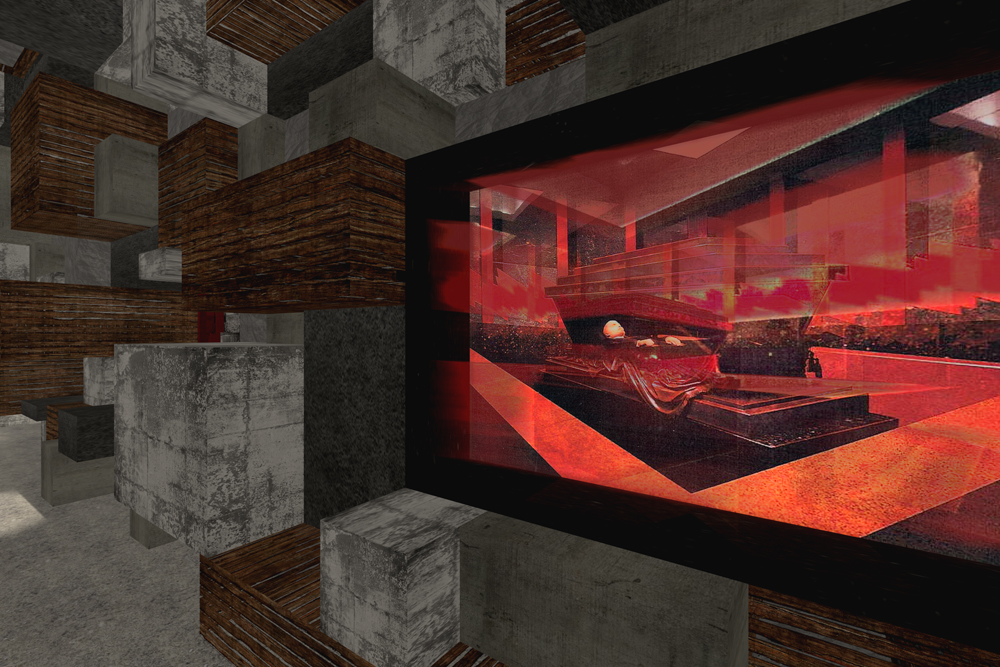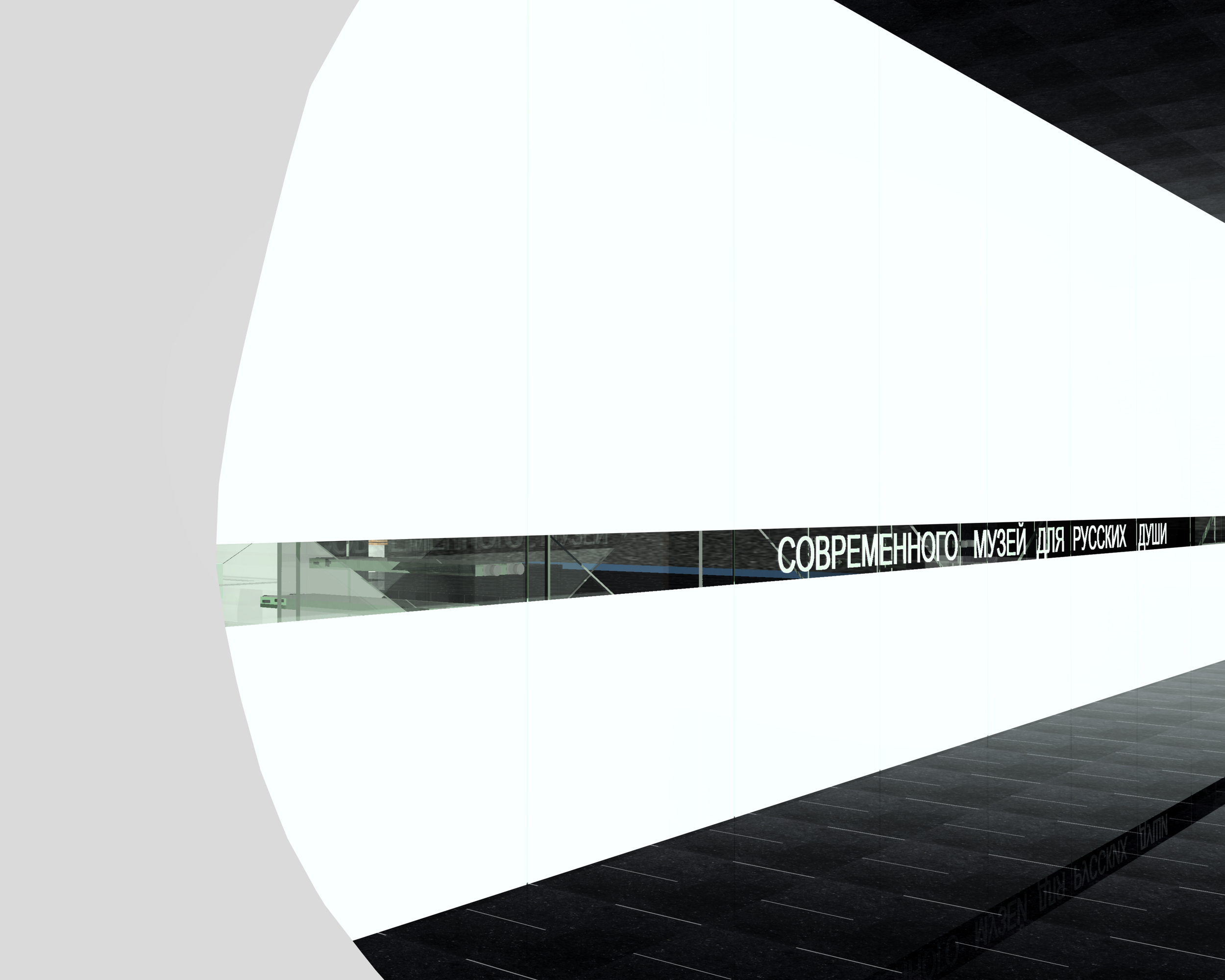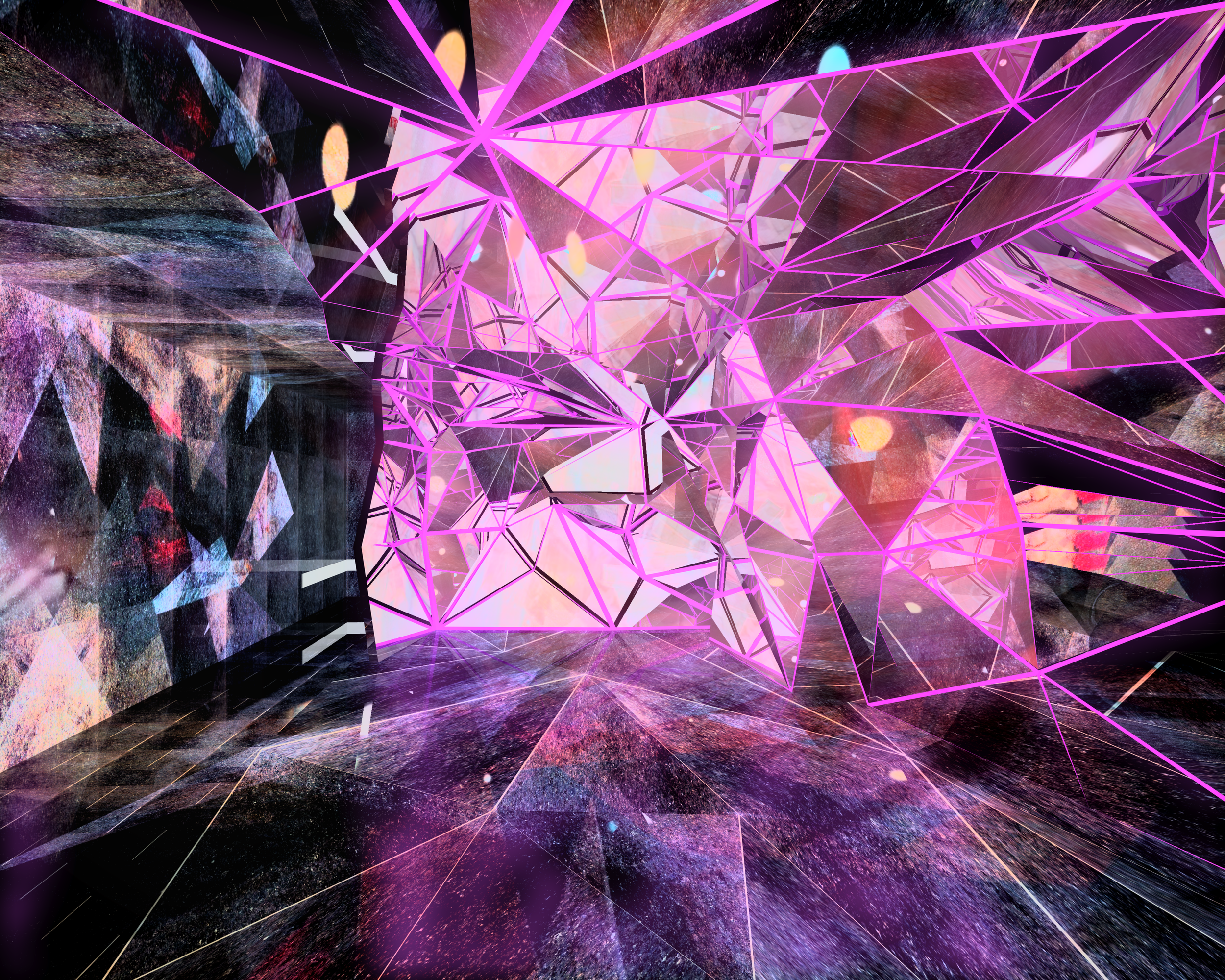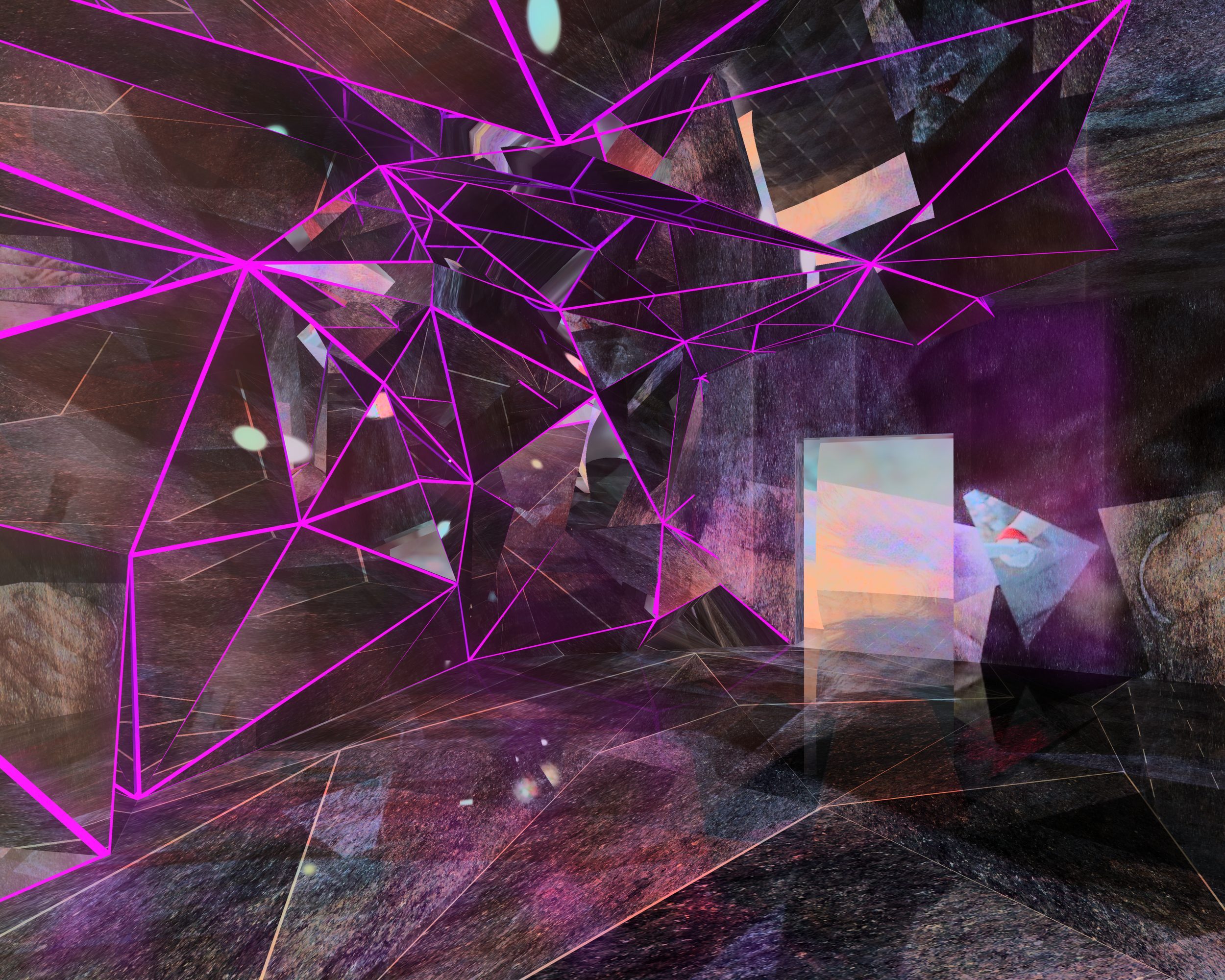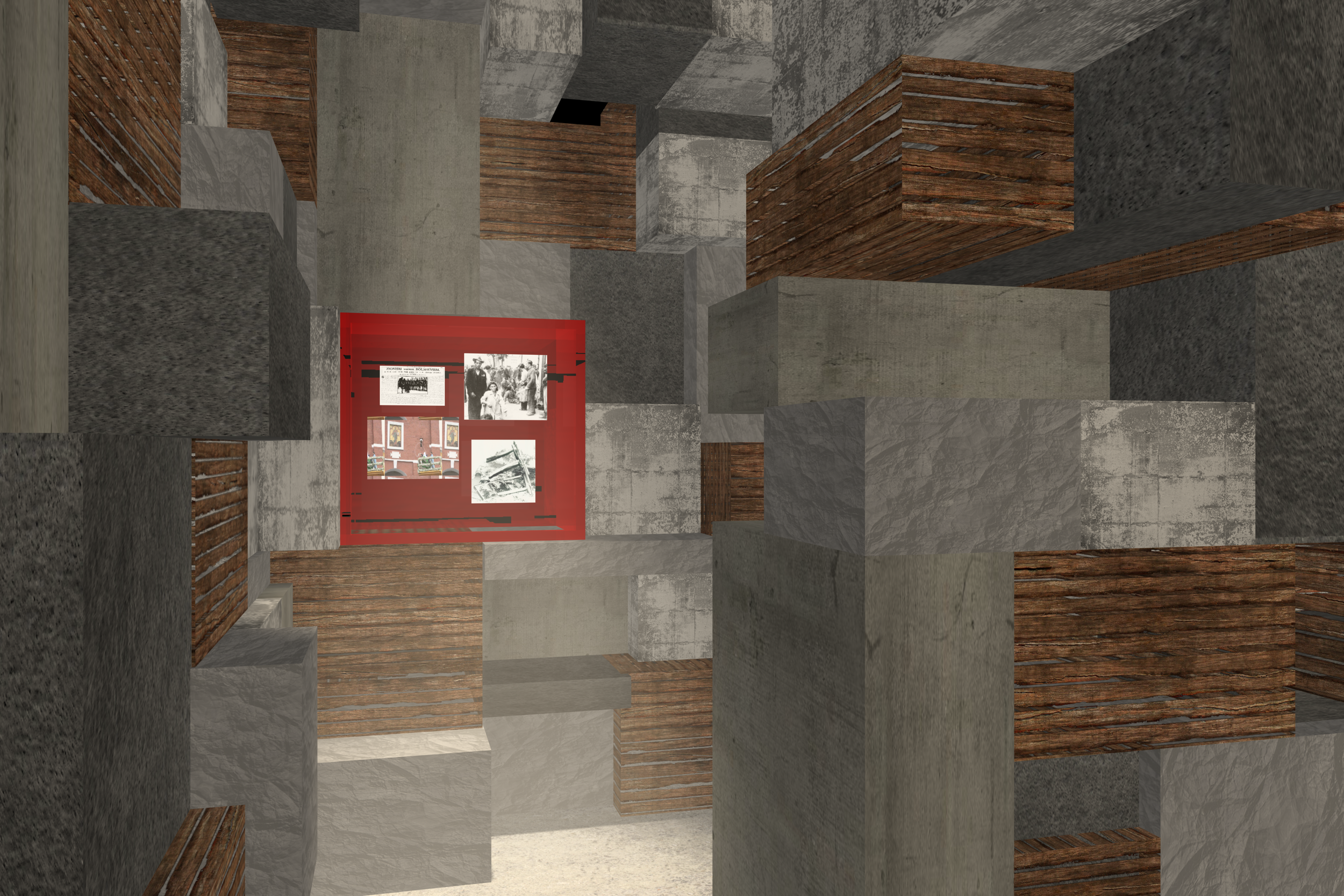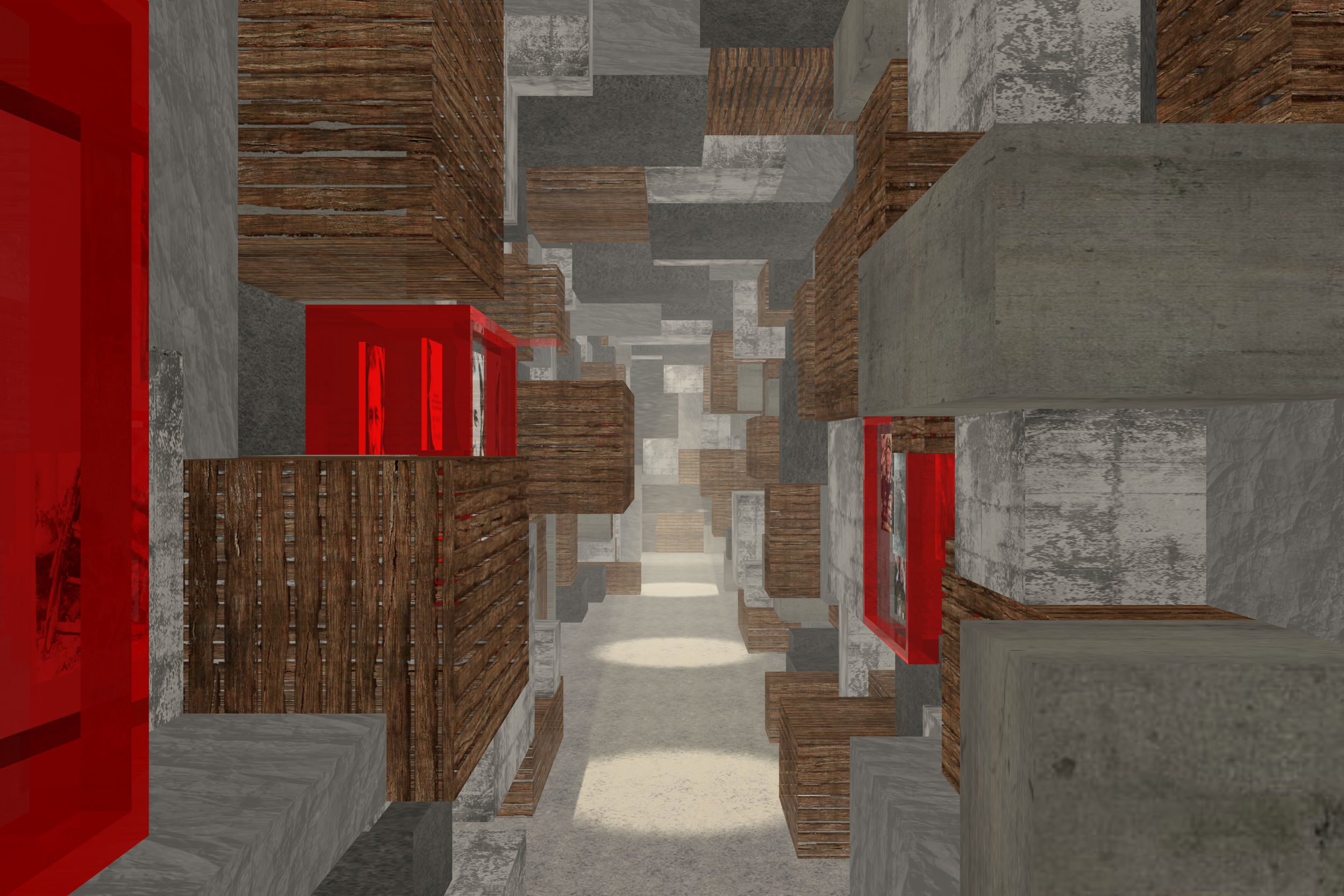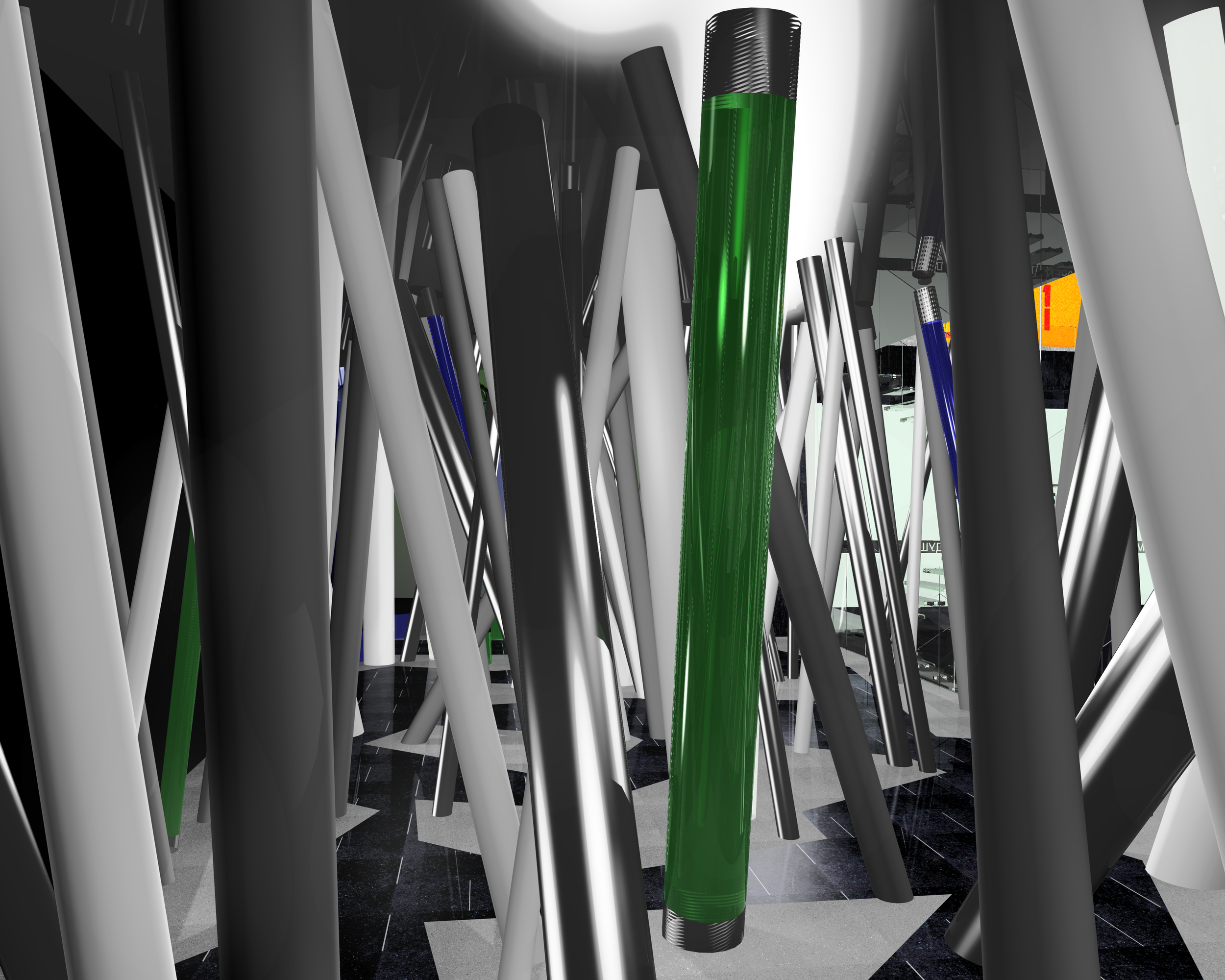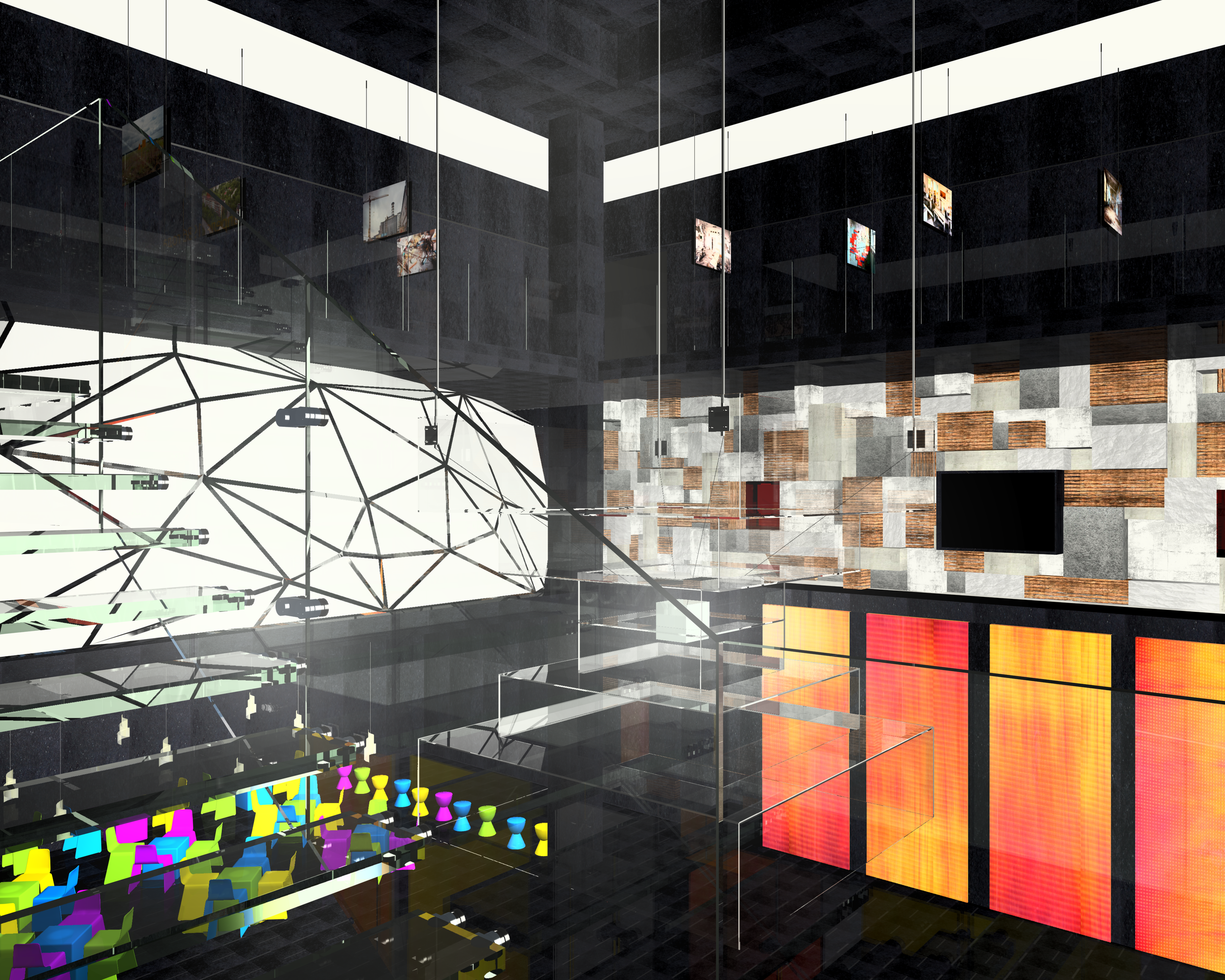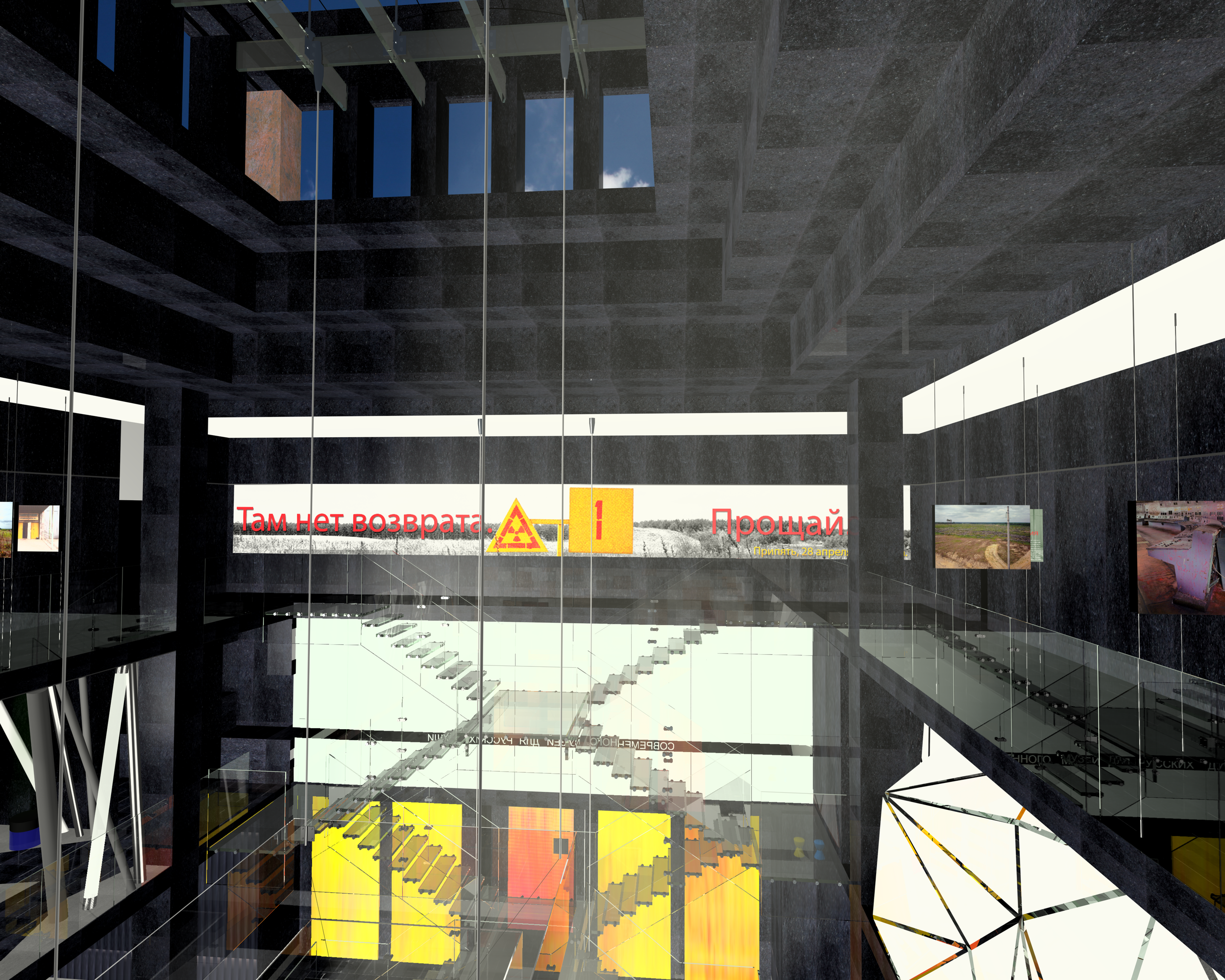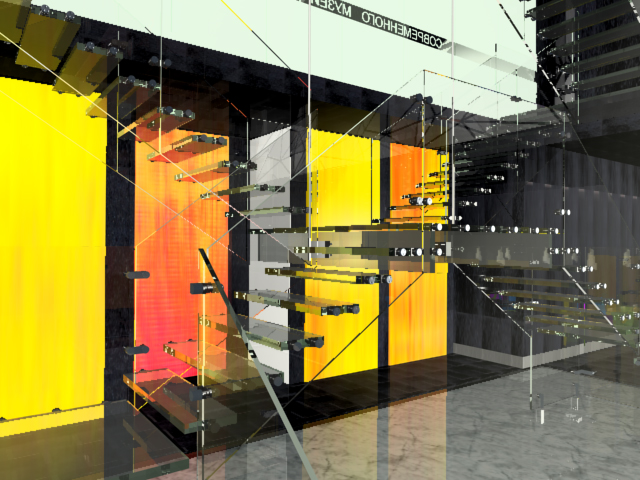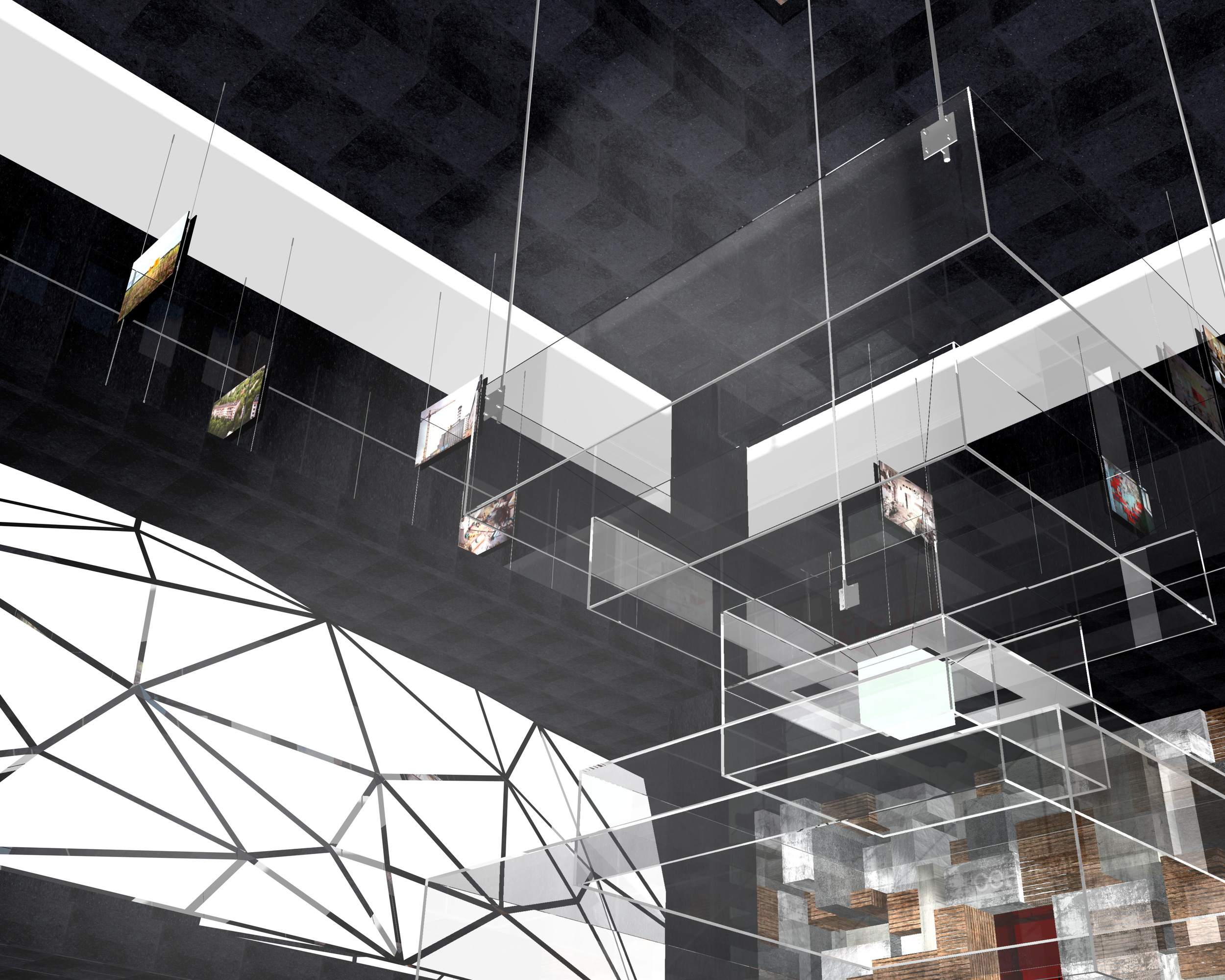Monument for the Russian Soul
Lenin's tomb in modern day Russia is both a landmark and a monument to the Soviet era. The tomb is a major tourist attraction, but simultaneously is despised by citizens of the Soviet era. This political tension inspired Venus Victory-Kouzine to reevaluate the structure for her Master's Interior design thesis at Lenin's tomb in modern-day Russia is both a landmark and a monument to the Soviet era. The tomb is a major tourist attraction but simultaneously is despised by citizens of the Soviet era. This political tension inspired Venus Victory-Kouzine to reevaluate the structure for her Master's Interior design thesis at Pratt Institute. The interior of her design has been completely gutted to create a Monument for the Russian Soul in four parts. The new exhibition space is composed of a Dream zone, Repression realm and Chaos area at the entry level with a temporary exhibit space above and below, a solace space coupled with a cafe. All of these areas are visually linked via a new skylit atrium and reached by a remarkable, suspended glass stair. Also suspended in the atrium is a glass lantern whose stepped form is reminiscent of Lenin's tomb, which is absent but ever present.
RethinkTANK's role was to visualize the concept based on CAD drawings, photographs, discussion, sketches and ideation elements. The entire tomb was modeled from supplied drawings and in-depth research and historical photographs. Separate research was done to accurately model and design the suspended stair. Similarly, the skylight was solely modeled on a RethinkTANK design and research. The gallery layout, content and method of presentation was provided by RethinkTANK. Lastly, modifications to the original concept based upon codes and circulation patterns were done by RethinkTANK.
The end result is a series of provocative images that will hopefully encourage the call for a new evaluation of the site and its potential historical worth.
Museum for the Russian Soul written in Russian adorns the entry wall of acid-etched glass. A strip of visibility gives a glimpse of the space beyond. Below: The Dream zone with mirrored panels with projected, fractured images of what the Soviet revolution promised.
The Dream zone viewed towards the entry. Below: The entry to the Repression realm.
View down the tight Repression realm with Soviet-era achievements framed in glowing Soviet red boxes in a sea of concrete, stone and battered wood emphasizing that these achievements were on the backs of those that were purged or enslaved in Gulags to build modern Russia. Below: A closeup of a display box. Nestled within this area and positioned at the exact point of view, is a framed photo of Lenin's tomb. This is shown at the beginning.
The chaos of the post-Soviet era is made manifest through a metaphor of tumbled Taiga birches represented in glowing glass, stainless steel and white lit cylinders.
The Chaos area viewed back at its entry.
The Chaos area with domed speakers offering poetry and hope with a view out to the Dream zone. Below: The atrium view showing the suspended glass lantern, Dream zone, Repression realm and the temporary exhibition space.
The temporary exhibition space with double-sided, suspended images from Pripyat, Chernobyl by the extraordinary photographer Robert Polidori. These images best represent the failed legacy of the Soviet era, with Pripyat a "model" town full of contained, healthy, educated citizenry laid to waste by a nuclear blast at Chernobyl reactor.
The exhibition space viewed from the atrium.
A view of the remarkable, suspended glass stair, suspended lantern and solace pool below. Diachroic panels hide back of house facilities. The cafe is adjacent.
A view of the suspended lantern and temporary exhibit space from the lower level.
A view of the skylight constructed of laminated glass beams set in a grid with stainless steel clamps and rods supporting a vaulted skylight. The blue sky is optimistic.

